Broccoli Sprouts Vs Mature Broccoli: Why 3-Day-Old Sprouts Pack 100X More Cancer-Fighting Power
Science-backed comparison reveals how tiny sprouts deliver exponentially more protective compounds than full-grown vegetables = your shortcut to maximum health benefits
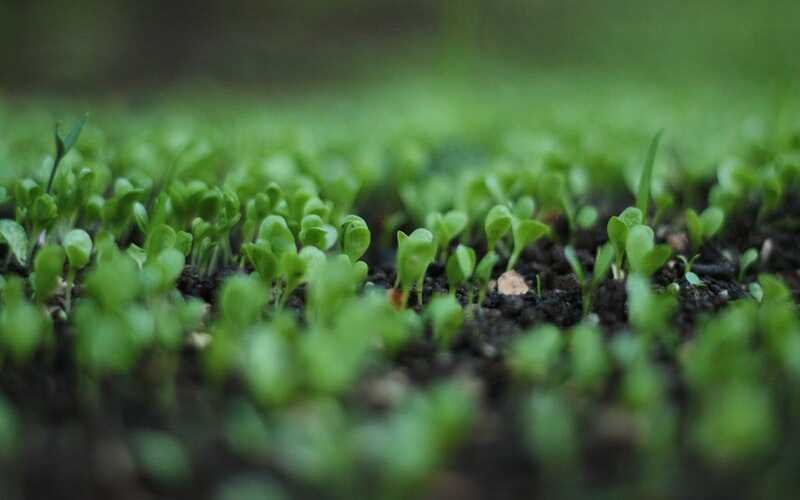
You’ve heard broccoli is healthy. You’ve dutifully added it to your grocery cart, steamed it for dinner, watched your kids push it around their plates.
What if you’ve been targeting the wrong form?
Research from Johns Hopkins University reveals something unexpected: those tiny, thread-like broccoli sprouts sprouting in health food stores contain 10 to 100 times more cancer-fighting compounds than the mature broccoli crowns you’ve been buying [1].
That’s not a typo. A single handful of 3-day-old sprouts delivers the same protective power as an entire grocery bag of mature broccoli.
The difference comes down to a compound called sulforaphane = a plant-based protective molecule (phytochemical) that activates your body’s detoxification systems and shows promise against multiple types of cancer.
Broccoli sprouts are concentrated sulforaphane factories, harvested at peak potency before the plant dilutes these compounds through growth.
This comparison examines both forms through clinical research, nutritional analysis, and practical considerations. You’ll learn which form delivers more health benefits per dollar, how preparation methods affect potency, and whether the convenience of mature broccoli outweighs the concentrated power of sprouts.
The 100X Sulforaphane Advantage
Why Scientists Choose Sprouts
Johns Hopkins research confirms that 3-day-old broccoli sprouts contain 10-100 times more cancer-fighting sulforaphane than mature broccoli heads. This concentration gap means a single handful of sprouts delivers the same protective compounds as an entire grocery bag of mature broccoli.
Source: PNAS, 1997Broccoli Sprouts vs Mature Broccoli: At a Glance
| Category | Broccoli Sprouts | Mature Broccoli |
|---|---|---|
| 🔬Sulforaphane Content | 10-100X HigherWinner | Baseline (1X) |
| ⏱️Growth Time | 3-4 daysWinner | 100-150 days |
| 💰Cost Per Serving | $0.08-0.15Winner | $0.40-0.60 |
| 🍽️Best Preparation | Raw/FreshWinner | Steamed/Cooked |
| 📅Shelf Life | 5-7 days refrigerated | 7-14 days refrigeratedWinner |
| 👅Taste Profile | Mild, slightly peppery | Earthy, slightly bitter |
| ⚠️Indole Glucosinolates | <10% (Lower risk)Winner | 67% (Potential concern) |
What Sets Broccoli Sprouts And Mature Broccoli Apart?
Broccoli sprouts and mature broccoli come from identical seeds. The distinction is timing.
Broccoli sprouts are harvested 3-4 days after germination. They look nothing like the vegetable you know = thin white stems topped with small green leaves, resembling alfalfa sprouts in size and appearance [2].
Mature broccoli grows for 100-150 days before harvest. You recognize the dense green crown of florets on a thick stalk [3].
This growth timeline creates dramatic biochemical differences. Think of it like comparing grape juice to wine = same starting point, completely different end products.
Sulforaphane levels peak when broccoli sprouts are 3-4 days old, declining as the plant matures over 100 days, illustrating optimal harvest timing for maximum health benefits.The Concentration Principle
When a seed germinates, it packs maximum protective compounds into the young plant. These compounds defend the vulnerable sprout against pests, diseases, and environmental stress during its most fragile developmental stage (Ed. note: Nature frontloads protection when it matters most).
As a single plant matures from sprout to full-grown vegetable, it distributes protective compounds across increasing tissue mass. While the plant may maintain sulforaphane production, that same amount gets diluted across 1 pound of tissue instead of concentrated in a few grams of sprout tissue.
A 3-day sprout weighing 60 milligrams contains far more sulforaphane per gram than a 1-pound mature head that same plant would eventually become [1].
This concentration difference = the core advantage of harvesting early.
The Sulforaphane Concentration Gap
Here’s where science gets specific.
Johns Hopkins researchers extracted and analyzed glucosinolates = the precursor compounds that become sulforaphane = from broccoli at different growth stages. Their 1997 landmark study published in Proceedings of the National Academy of Sciences found 3-day-old sprouts contained 20 to 50 times more glucoraphanin than mature broccoli [1].
“I discovered that broccoli sprouts were a very potent source of this human protective agent and had way more sulforaphane than market-stage broccoli,” explains Dr. Jed Fahey, the Johns Hopkins researcher who led the study [4].
Subsequent analyses confirmed the range extends even higher under optimal conditions = up to 100-fold concentration difference [5].
What This Means In Practice
To reach an effective daily dose of 40-60mg sulforaphane (recommended by Dr. Rhonda Patrick of FoundMyFitness), you need [6]:
- Broccoli sprouts: 100-140 grams (roughly 1 cup)
- Mature broccoli: 1,000-10,000 grams (2-20 pounds)
Can you eat 10 pounds of broccoli daily?
The Bioavailability Factor
Concentration only matters if your body absorbs it. Sulforaphane shows 82% bioavailability = meaning your digestive system successfully absorbs and delivers most of what you consume to your bloodstream [7]. This high absorption rate makes the concentration gap even more significant.
The compound crosses the blood-brain barrier, reaches peak plasma concentration 1-3 hours after consumption, and activates protective genetic pathways throughout your body [8].
The Myrosinase Factor
High glucoraphanin concentration means nothing without the enzyme that activates it.
Broccoli doesn’t contain sulforaphane directly. It contains glucoraphanin = an inactive precursor locked inside plant cells.
Enter myrosinase.
This enzyme acts as the key that unlocks sulforaphane production. When you chew, chop, or otherwise damage broccoli cells, myrosinase contacts glucoraphanin and catalyzes its conversion to active sulforaphane [9].
The biochemical activation process: Myrosinase enzyme converts inactive glucoraphanin into active sulforaphane when broccoli sprouts are chewed, chopped, or damaged, unlocking cancer-fighting properties.The Cooking Problem
Heat destroys myrosinase. Boiling broccoli at 100°C completely inactivates the enzyme [10]. Your cooked broccoli still contains glucoraphanin, but without myrosinase, your body can’t convert much of it to sulforaphane.
Some conversion occurs through gut bacteria, but it’s inconsistent and inefficient compared to plant myrosinase [11].
The Sprout Advantage
Broccoli sprouts are typically eaten raw. Every cell remains intact until you chew them, ensuring maximum myrosinase activity and sulforaphane production.
The Mustard Seed Solution
“What if I prefer my broccoli cooked?”
Add mustard seed powder after cooking. Mustard seeds contain myrosinase that survives grinding and reactivates glucoraphanin conversion even in cooked broccoli [12]. Use 1/4 teaspoon per cup of cooked broccoli.
Other myrosinase sources include raw radish, wasabi, or horseradish mixed into cooked cruciferous vegetables.
Polysulfides: The 2023 Discovery Changing The Conversation
Sulforaphane dominated broccoli research for decades. Recent discoveries reveal it’s not the only protective compound at high concentrations in sprouts.
A 2023 study published in Food Navigator identified polysulfides = sulfur-containing molecules distinct from sulforaphane = at significantly higher levels in broccoli sprouts than mature broccoli or even garlic [13].
Polysulfides show different biological activities than sulforaphane, including:
- Enhanced gut microbiome support
- Direct anti-inflammatory signaling
- Mitochondrial function optimization [14]
Dr. Tamara Alaba’s 2024 dissertation at the University of Maine documented these polysulfides in broccoli sprout interventions, finding measurable improvements in gut health markers and reduced fecal calprotectin levels = an indicator of intestinal inflammation [15].
This research suggests the sprout advantage extends beyond sulforaphane alone. The young plant concentrates multiple protective compound classes simultaneously.
Nutritional Comparison: Beyond Sulforaphane
Sulforaphane dominates research attention, but vitamins, minerals, and fiber matter too.
Broccoli Sprouts vs Mature Broccoli (Per 76g serving)
| Nutrient | Broccoli Sprouts | Mature Broccoli | Winner |
|---|---|---|---|
| Calories | 23.1 | 24.3 | Similar |
| Protein | 1.32g | 2.09g | Mature |
| Fiber | 2.64g | 1.82g | Sprouts |
| Calcium | 51.5mg | 35mg | Sprouts |
| Potassium | 60mg | 230mg | Mature |
| Vitamin A | 59.5mcg | 6.08mcg | Sprouts |
| Vitamin C | 35.6mg | 40.5mg | Mature |
| Vitamin K | 76mcg | 0.8mcg | Sprouts |
| Sulforaphane | 10-100X | Baseline | Sprouts |
Sources: Medical News Today, USDA FoodData Central [16,17]
Mature broccoli provides more potassium, protein, and vitamin C per serving. Sprouts dominate in vitamin A, vitamin K, calcium, fiber, and sulforaphane.
For cancer prevention and detoxification support, sprouts deliver superior compounds. For general nutrition and mineral intake, both contribute valuable nutrients to a balanced diet.
Indole Glucosinolates: The Complication In Mature Broccoli
The nutritional table shows what these vegetables contain. Understanding what sprouts DON’T contain reveals another advantage.
Not all glucosinolates are created equal.
Mature broccoli contains high levels of indole glucosinolates = compounds that break down into substances with more complex effects than sulforaphane’s straightforward benefits.
The Two Types
- Alkyl glucosinolates (like glucoraphanin): Convert to sulforaphane. Monofunctional inducers = compounds that activate only your body’s detoxification (phase 2) enzymes without triggering toxin-processing (phase 1 or cytochrome P450) activity [1]. Phase 2 enzymes eliminate harmful substances from your body = pure protection.
- Indole glucosinolates (like glucobrassicin): Break down into indole-3-carbinol and related compounds. Bifunctional inducers = compounds that activate both phase 1 enzymes (which can activate carcinogens) and phase 2 enzymes (which eliminate them), creating conflicting effects. Activating phase 1 means some toxins get “turned on” before they’re eliminated. Some studies show tumor-promoting activity in certain experimental contexts [18].
Monofunctional = straightforward detoxification. Bifunctional = complicated mix of activation and elimination.
The Distribution Difference
Analysis of seven broccoli cultivars found mature broccoli averages 67% indole glucosinolates, 33% alkyl glucosinolates [1].
Three-day-old broccoli sprouts from the same seeds: Less than 10% indole glucosinolates, over 90% alkyl glucosinolates [1].
To get 108 micromoles of beneficial alkyl glucosinolates, you could:
- Eat 100g mature broccoli (also consuming 229 micromoles of indole glucosinolates)
- Eat 5g broccoli sprouts (consuming only 11 micromoles of indole glucosinolates) [1]
This 20:1 serving size difference means you eat dramatically less food while avoiding compounds with uncertain effects. The sprout approach delivers the protective compounds you want while minimizing compounds with potentially problematic effects.
Cancer Prevention: What The Research Shows
Sulforaphane’s protective mechanisms reach beyond detoxification theory. Your cancer risk shows measurable response in experimental models.
Johns Hopkins researchers tested broccoli sprout extracts in female rats treated with DMBA = a chemical that induces mammary tumors. Daily doses of sprout-derived glucosinolates or sulforaphane given for 5 days around carcinogen exposure significantly reduced tumor incidence, multiplicity, and development speed [1].
The protection came from just 81-424mg of dried sprout extract daily = roughly 0.5-3% of the animals’ food intake. Previous studies using dried mature crucifers required 5-40% of dietary intake to achieve similar protection [1].
Human Studies
While animal research dominates sulforaphane cancer studies, human trials show measurable biological effects:
- Prostate cancer: Phase II trial found broccoli sprout extract slowed PSA doubling time in men with recurrent prostate cancer [19]
- Breast cancer: Cohort studies from 1978-2023 confirmed significant association between cruciferous vegetable intake and reduced breast cancer risk [20]
- Bladder cancer: Sulforaphane-rich extracts showed detoxification enzyme induction in human bladder tissue [21]
These studies suggest protective mechanisms translate from laboratory to human biology, though definitive cancer prevention trials remain ongoing.
Brain Health & Neurological Benefits
Sulforaphane’s influence extends from cancer prevention to neurological protection. Your brain shows measurable benefits from these compounds too.
A 2025 review in PMC summarized sulforaphane’s neuroprotective mechanisms [8]:
- Alzheimer’s disease: Sulforaphane reduces beta-amyloid accumulation and tau protein phosphorylation = two hallmarks of Alzheimer’s pathology. It also increases glutathione levels in brain tissue, protecting neurons from oxidative stress.
- Parkinson’s disease: The compound protects dopamine-producing neurons from degeneration, potentially slowing disease progression [22].
- Stroke: Animal studies show sulforaphane administration reduces brain cell death after ischemic events, minimizing tissue loss and improving functional outcomes [8].
- Autism spectrum disorder: An 18-week trial gave 29 young men with ASD either broccoli sprout extract providing sulforaphane or placebo. Those receiving sulforaphane showed significant improvements in social interaction, verbal communication, and repetitive behaviors compared to controls [23].
(Ed. note: Autism Speaks cautions that this small trial used sulforaphane doses far exceeding dietary levels, and two participants experienced seizures during the study. Discuss with healthcare providers before supplementing [24].)
How It Works
Sulforaphane activates Nrf2 = a master protein switch that turns on over 200 genes involved in antioxidant defense, detoxification, and cellular protection. This activation persists for 48-72 hours after a single dose, providing extended protective effects [25].
Gut Health & Microbiome Effects
The compound’s benefits aren’t limited to the brain. Your digestive system shows measurable improvements too.
The 2024 study by Dr. Tamara Alaba examined how broccoli sprout consumption affects the gut microbiome and inflammatory markers [15].
Participants consuming broccoli sprouts showed:
- Decreased fecal calprotectin (inflammation marker)
- Increased short-chain fatty acid production
- Favorable shifts in microbial composition
A separate 2023 study found sulforaphane-rich sprouts reduced H. pylori infections = the bacterium causing ulcers and gastritis. After eating 70 grams of 3-day-old sprouts daily for 8 weeks, participants showed reduced H. pylori colonization and decreased gastric inflammation [26].
Sulforaphane’s antibacterial properties appear selective = it inhibits pathogenic bacteria while supporting beneficial species. This selectivity distinguishes it from broad-spectrum antibiotics that indiscriminately eliminate gut microbes.
Maximizing Sulforaphane
You can increase sulforaphane yield from both sprouts and mature broccoli through specific techniques.
The Freezing Method
Freezing broccoli sprouts increases sulforaphane production by 2-3.5 times [27]. The freeze-thaw cycle damages cell walls, increasing myrosinase-glucoraphanin contact when you later thaw and consume them.
Process: Rinse fresh sprouts, spread on a tray, freeze overnight, transfer to freezer bags. Thaw before eating.
The Chop-and-Wait Technique
Chop broccoli (sprouts or mature) and wait 90 seconds before eating or cooking. This pause allows myrosinase to convert glucoraphanin to sulforaphane before heat exposure [28].
The technique works for mature broccoli you plan to cook = chop first, wait, then apply heat. Some sulforaphane survives light steaming once formed.
The Chewing Principle
Thorough chewing releases more myrosinase. Aim for 20-30 chews per mouthful of raw sprouts or broccoli.
Blending works too = the mechanical damage achieves the same cell disruption. Add sprouts to smoothies for convenient consumption.
The Mustard Boost
After cooking mature broccoli, sprinkle 1/4 teaspoon ground mustard seed powder per cup of vegetables. The mustard myrosinase converts remaining glucoraphanin to sulforaphane [12].
Alternative myrosinase sources: raw daikon radish, wasabi paste, fresh horseradish.
Cost-Benefit Analysis
“But aren’t sprouts expensive?”
Let’s calculate.
Store-Bought Comparison
Broccoli sprouts: $3.99 for 4oz package = $16/pound = $0.10 per 25g serving
Mature broccoli: $1.99 per pound = $0.31 per 150g serving
On a per-serving basis, sprouts cost less than mature broccoli while delivering 10-100x more sulforaphane.
Home Growing Economics
Growing your own sprouts changes the equation dramatically.
Initial investment:
- Glass jar or sprouting tray: $8-15
- Organic broccoli seeds (1 pound): $18-25
Per-batch cost:
- Seeds used: 2-3 tablespoons ($0.60-0.90)
- Water: negligible
- Time: 5 minutes daily for 3-4 days
One pound of seeds produces approximately 6-8 pounds of fresh sprouts depending on growing conditions and seed quality [29]. That’s $0.015-0.025 per serving = 94-97% cost reduction versus buying mature broccoli.
Nutrient Density Per Dollar
When standardized for sulforaphane content (prices based on 2024-2025 U.S. market averages):
- Home-grown sprouts: $0.015 per serving with high sulforaphane
- Store-bought sprouts: $0.10 per serving with high sulforaphane
- Mature broccoli: $0.31 per serving with baseline sulforaphane
- Broccoli powder/supplements: $1.20-2.50 per serving with variable sulforaphane
Home-grown sprouts deliver maximum nutrients per dollar spent. Store-bought sprouts remain competitive. Mature broccoli costs more for equivalent sulforaphane. Supplements are the least economical option.
Safety Considerations
Important safety considerations: Wash broccoli sprouts thoroughly to prevent bacterial contamination, monitor thyroid function with high intake, and consult doctors if taking specific medications like furosemide or verapamil.Bacterial Contamination Risk
Sprouts grow in warm, humid conditions = ideal for bacterial proliferation. Salmonella, E. coli, and Listeria outbreaks have been linked to contaminated sprouts [30].
Mitigation strategies:
- Purchase from reputable suppliers
- Check for recalls before buying
- Wash thoroughly under running water
- Store at 4°C or below
- Consume within 5-7 days of harvest
- When growing at home, sanitize all equipment and use clean water
Immunocompromised individuals, pregnant women, young children, and elderly adults should discuss sprout consumption with healthcare providers.
Thyroid Function
Cruciferous vegetables contain goitrogens = compounds that can interfere with thyroid hormone synthesis by blocking iodine uptake [31].
Research indicates normal consumption levels pose minimal risk for individuals with healthy thyroid function. A study examining Brassica vegetables found typical serving sizes (under 35 ounces or 1kg daily) unlikely to cause thyroid dysfunction [32].
Those with hypothyroidism or iodine deficiency should monitor intake and ensure adequate iodine consumption (150mcg daily for adults).
Drug Interactions
Sulforaphane may interact with certain medications [33]:
- Diuretics (furosemide): Potential reduced effectiveness
- Calcium channel blockers (verapamil): Possible interaction with metabolism
- NSAIDs (ketoprofen): May alter drug clearance
If taking prescription medications, consult your physician before consuming large amounts of broccoli sprouts or sulforaphane supplements.
Pregnancy & Breastfeeding
Limited research examines high-dose sulforaphane during pregnancy. Normal dietary amounts of cruciferous vegetables appear safe, but concentrated extracts or supplements lack safety data.
Pregnant and breastfeeding women should consume sprouts as part of varied vegetable intake rather than therapeutic doses without medical supervision.
How To Add Sprouts To Your Diet
Broccoli sprouts have a mild, slightly peppery taste = less bitter than mature broccoli.
Raw Applications
- Add to sandwiches and wraps for crunch
- Top salads instead of lettuce
- Mix into grain bowls
- Blend into smoothies (masks taste completely)
- Serve as crunchy snack with hummus
Minimal-Heat Options
- Add to soups after cooking (don’t boil)
- Top warm dishes just before serving
- Incorporate into omelets at the end
- Mix into pasta after draining
Optimal Daily Intake
Dr. Rhonda Patrick recommends 100-140 grams of fresh broccoli sprouts daily to reach 40-60mg sulforaphane [6]. That equals roughly 1 cup or a large handful.
Start with smaller amounts (1/4 cup) if new to sprouts. Gradually increase over 2-3 weeks as your digestive system adjusts.
Timing Considerations
No definitive research establishes optimal consumption timing. Some practitioners suggest morning intake to maximize the 48-72 hour protective window. Others recommend splitting doses throughout the day.
Eat sprouts when convenient and sustainable for your routine = consistency matters more than timing.
Growing Your Own: Basic Guide
Home sprouting requires minimal equipment and space.
Equipment Needed
- Wide-mouth glass jar (quart size)
- Sprouting lid with screen (or cheesecloth + rubber band)
- Organic broccoli sprouting seeds
- Clean water
Process
Day 1 (Evening):
- Add 2 tablespoons seeds to jar
- Fill with water, soak 8-12 hours
Day 2-4 (Morning & Evening):
- Drain soak water
- Rinse seeds thoroughly
- Drain completely (invert jar at 45° angle)
- Repeat rinsing 2x daily
Day 3-4: Sprouts ready when stems are 1-2 inches with small green leaves. Rinse, drain well, refrigerate.
Common Mistakes
- Insufficient draining = mold growth
- Infrequent rinsing = bacterial contamination
- Too many seeds = overcrowding and poor drainage
- Direct sunlight = overheating
Properly grown sprouts have a fresh, clean smell. Discard any batch with musty, sour, or off odors.
Mature Broccoli Still Has Value
This comparison highlights sprouts’ advantages, but mature broccoli remains nutritious.
When Mature Broccoli Makes Sense
- Higher protein needs: Mature broccoli provides 58% more protein per serving
- Potassium requirements: Mature broccoli delivers 3.8x more potassium
- Cooking preferences: Some people dislike raw vegetables; mature broccoli tolerates cooking better
- Availability: Mature broccoli is universally available; sprouts require specialty stores or home growing
- Texture variety: Mature broccoli adds different textural element to meals
The Combined Approach
Many nutrition experts suggest eating both forms for complementary benefits:
- Sprouts: 3-4 times weekly for concentrated sulforaphane
- Mature broccoli: 2-3 times weekly for fiber, potassium, and protein
This strategy provides sulforaphane’s protective effects while ensuring broader nutrient intake from varied cruciferous vegetables.
Frequently Asked Questions
The Verdict: Which Should You Choose?
The research points clearly toward broccoli sprouts for maximum cancer-fighting and detoxification benefits. The 10-100x sulforaphane advantage, higher levels of polysulfides, lower indole glucosinolate content, and superior nutrient density per dollar make sprouts the optimal choice for therapeutic nutrition.
Mature broccoli still delivers valuable nutrition = higher protein, potassium, and vitamin C, plus the fiber and plant compounds common to cruciferous vegetables. It’s more readily available, culturally familiar, and works better in cooked dishes.
The ideal approach incorporates both:
For disease prevention and maximum protective compounds: Consume broccoli sprouts 3-4 times weekly, 100-140 grams per serving. Eat them raw, freeze them to boost sulforaphane, and chew thoroughly.
For overall nutrition and meal variety: Include mature broccoli 2-3 times weekly. Steam lightly, chop before cooking, and add mustard seed powder to preserve sulforaphane formation.
This combined strategy provides the concentrated protective effects of sprouts while ensuring broad-spectrum nutrition from varied vegetable intake.
The concentration gap is real. The research is robust. The choice is yours.
References
- [1] Fahey, J.W., Zhang, Y., Talalay, P. – “Broccoli sprouts: An exceptionally rich source of inducers of enzymes that protect against chemical carcinogens” – Proceedings of the National Academy of Sciences, September 1997
- [2] International Sprout Growers Association – “Sprout Nutrition Facts” – 2020
- [3] Grow Your Pantry – “Broccoli Sprouts vs Broccoli: The Definitive Guide” – March 2020
- [4] Johns Hopkins University – “Hope sprouts eternal: Broccoli sprouts health research” – Spring 2023
- [5] Courtyard Cafe – “7 Benefits of Eating Broccoli Sprouts vs Broccoli” – April 2019
- [6] Patrick, R. – “Sulforaphane dosage recommendations” – FoundMyFitness, 2020
- [7] Healthline – “What Are Broccoli Sprouts? Nutrients, Benefits, and Recipes” – August 2021
- [8] PMC – “Broccoli for the brain: A review of the neuroprotective mechanisms of sulforaphane” – July 2025
- [9] UC Davis Nutrition Department – “Nutrition Bites: Sprouts” – 2024
- [10] Academic OUP – “Biochemical composition of broccoli seeds and sprouts at different stages” – June 2013
- [11] PMC – “Factors Influencing Sulforaphane Content in Broccoli Sprouts” – August 2021
- [12] FoundMyFitness – “How to Increase Sulforaphane in Broccoli Sprouts by ~3.5-fold” – 2015
- [13] Food Navigator – “Broccoli sprouts contain an abundance of polysulfide molecules” – October 2023
- [14] Medical News Today – “Microgreens like broccoli sprouts support gut health, study shows” – November 2023
- [15] Alaba, T.E. – “The Antioxidants and Anti-inflammatories Benefit of Broccoli Sprout Diets” – University of Maine Dissertation, 2024
- [16] Medical News Today – “Broccoli nutritional information” – 2024
- [17] USDA FoodData Central – “Broccoli, cooked nutritional data” – 2024
- [18] PNAS – “Glucosinolate profiles and phase 2 enzyme induction” – 1997
- [19] Cambridge Core – “Sulforaphane as a potential therapeutic agent: comprehensive analysis of clinical trials” – September 2025
- [20] Annual Reviews – “Cruciferous Vegetables, Bioactive Metabolites, and Microbiome for Breast Cancer Prevention” – 2025
- [21] NCBI – “Sulforaphane mechanisms in cancer prevention” – 2024
- [22] NCBI – “Sulforaphane neuroprotection in Parkinson’s disease” – 2020
- [23] PMC – “Sulforaphane treatment of autism spectrum disorder” – 2014
- [24] Autism Speaks – “Broccoli Sprouts & Autism: What You Need to Know” – 2014
- [25] FoundMyFitness Clips – “How long do the health effects of broccoli sprouts last?” – 2020
- [26] PMC – “Broccoli sprouts reduce H. pylori infections” – 2017
- [27] Hormones Balance – “How to triple the sulforaphane content in broccoli sprouts” – 2018
- [28] FoundMyFitness – “How to Grow Broccoli Sprouts” – 2020
- [29] Grow Your Pantry – “Broccoli Sprouts Growing Guide” – 2020
- [30] CDC – “Foods Linked to Foodborne Illness: Sprouts” – 2024
- [31] Healthline – “Goitrogens and thyroid function” – 2024
- [32] PMC – “Effects of Brassica vegetables on thyroid function” – 2016
- [33] PubMed – “Sulforaphane drug interactions” – 2013
- [34] On The Grow – “Growing Broccoli: Sprouts vs. Microgreens” – 2023
Read Next
- Beef vs Pork vs Chicken: Which meat is best
- Matcha Tea Vs Green Tea Comparison of Nutrients, Benefits
- Cauliflower Vs Broccoli: Which Is Healthier?
- Octopus vs Red Meat: A Nutritional Comparison
